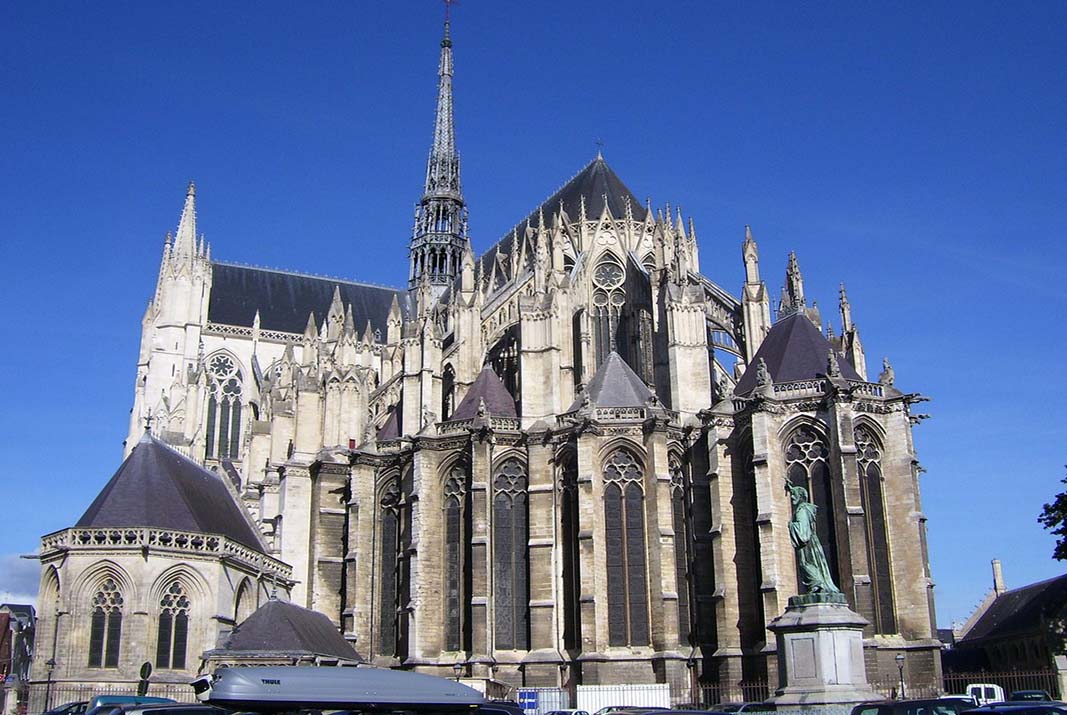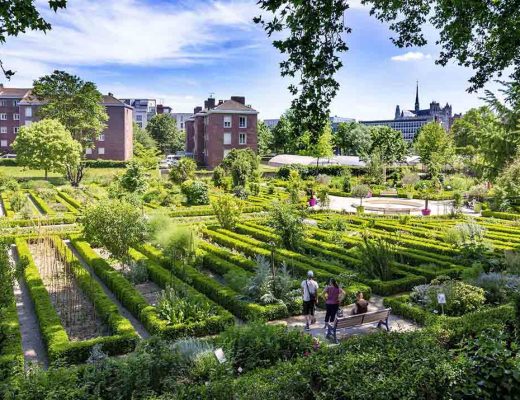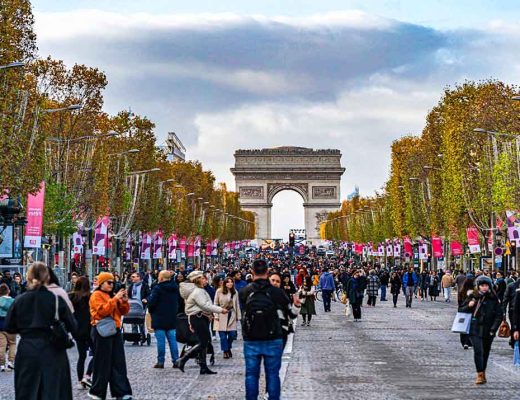I still remember the first time I saw Amiens Cathedral. I had just stepped out from Rue de la République, the July air heavy with warmth, when suddenly the enormous façade rose up before me like a wave of stone. My breath stopped. Notre-Dame d’Amiens isn’t just a building—it’s a living monument, a piece of the Middle Ages still breathing in the heart of northern France.
Coming from Paris, I had thought I was ready. After all, I had seen Notre-Dame de Paris many times, and I had visited cathedrals in Reims and Chartres. But Amiens was different. It wasn’t only the size (though it is the largest cathedral in France). It was the way the light fell across the sculpted figures, the way the bells echoed faintly across the square, the way locals and tourists alike seemed dwarfed but strangely comforted by its presence.
In this article, I want to take you with me—not just into the cathedral itself, but also through the streets around it. I’ll share what I saw, what I felt, what I learned, and the practical details that made my visit smooth: opening hours, ticket costs, nearby sights, booking platforms, and even tips for meals after you’ve climbed every last spiral staircase.
The First Encounter: Standing Before the Western Façade
The main façade of Amiens Cathedral faces Place Notre-Dame, a large square in the city center. The address is simply: Place Notre-Dame, 80000 Amiens, France. You can’t miss it—it dominates the skyline long before you reach the square.
As I stood there, I realized it wasn’t just its height (42 meters to the vault, 112 meters to the spire), but the sheer breadth of it. Every surface is covered with sculptures: saints, apostles, biblical figures, angels, and gargoyles that seem ready to leap down and whisper secrets into your ear.
The central portal depicts the Last Judgment. I found myself staring at the tiny details carved nearly 800 years ago: souls weighed by angels, demons tugging at chains, Christ in majesty above it all. The sunlight shifted across the stone, making it look alive.
Standing in that square, I understood why UNESCO inscribed it as a World Heritage Site. It wasn’t just architecture—it was storytelling in stone.
Entering the Nave: A Sea of Light
Admission to the cathedral itself is free. That fact alone astonished me, because stepping inside feels like stepping into a place that should charge a fortune.
The first impression was light. Unlike some darker Gothic churches, Amiens seems to glow. The stained-glass windows filter in hues of ruby, sapphire, and emerald, but the high vaults allow daylight to wash across the interior. I tilted my head back until my neck ached, just to trace the delicate ribs of the vaulting.
The nave stretches endlessly—145 meters long, the largest in France. Walking down the central aisle, I felt like a small boat drifting across a sea of stone.
I stopped in front of the choir stalls, intricately carved woodwork from the 16th century. Each panel tells stories of saints, bishops, and martyrs. I ran my fingers lightly along the wood, imagining the craftsmen who must have spent decades shaping each curve.
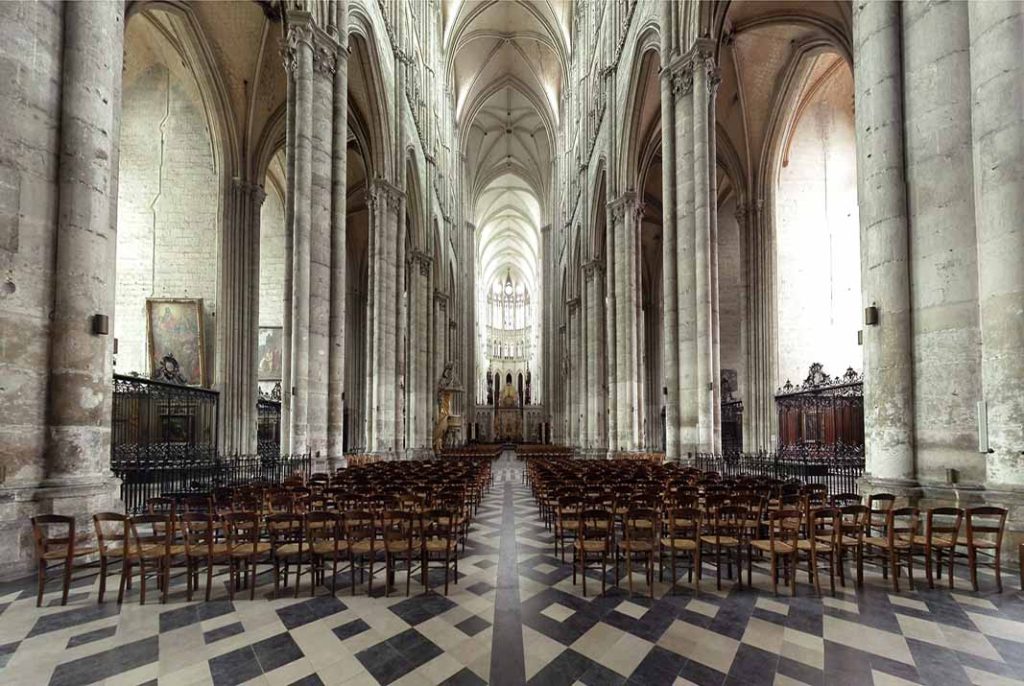
Climbing to the Towers: A View Worth Every Step
If you want more than the ground-level experience, you can buy a ticket to climb the towers. The entrance for the tower climb is on the left side of the façade. Tickets cost around 7 euros, and you can book them in advance on Tiqets or GetYourGuide to skip queues, especially in summer.
The climb is no joke—about 300 spiral steps. The staircase is narrow and dark, but every turn brings anticipation. When I finally stepped out onto the gallery, the view swept across the rooftops of Amiens, the Somme River glittering in the distance, and fields stretching endlessly beyond.
I lingered there, letting the wind hit my face, listening to the bells. For me, this was the moment the cathedral became more than architecture. It became part of the landscape, part of the life of the city itself.
The Sound and Light Show: Colors Reborn
One of the greatest surprises was discovering the Chroma light show, held every summer evening on the façade. At around 10:45 p.m. in July, projectors bring the cathedral back to its original painted colors.
Imagine the statues no longer pale stone, but vivid blues, reds, and golds. Suddenly, the façade isn’t frozen history—it’s alive, shouting in color the way medieval people would have seen it. Standing among hundreds of others in the square, I felt goosebumps. It was like stepping into the 13th century.
The show is free, and it’s unmissable. My advice: arrive early to find a good spot in the square.
Exploring the Treasury: A Hidden Gem
Behind the choir, tucked away, is the treasury. Entry is a few euros, and I booked my slot on GetYourGuide to make sure I didn’t miss it.
Inside are reliquaries, medieval manuscripts, liturgical objects—each one carrying centuries of devotion. My favorite was the reliquary of St. John the Baptist’s head, a relic that drew pilgrims from across Europe in the Middle Ages. Whether or not you believe, you can’t help but feel the weight of history here.
Practical Tips for Visiting Amiens Cathedral
- Opening Hours: Generally open from 8:30 a.m. to 6:30 p.m., but check before you go—times can change for services.
- Entry: Free for the main cathedral; small fee for the towers and treasury.
- Best Time: Morning, when light floods the nave, or late evening for the light show.
- Booking: Use Tiqets, GetYourGuide, or the official cathedral website for tower climbs and treasury access.
- Clothing: Dress respectfully—it’s still a place of worship. In summer, carry a light scarf to cover shoulders if needed.
- Accessibility: The nave is accessible, but the tower climb is not.
Nearby Sights Within Walking Distance
What makes Amiens Cathedral even more magical is its location. Step outside, and you’re within walking distance of several other treasures.
Maison de Jules Verne
Address: 2 Rue Charles Dubois, 80000 Amiens
Only a 10-minute walk from the cathedral. This 19th-century house was the residence of Jules Verne, the father of science fiction. For 7.50 euros, I wandered through his study, complete with globes and maps that inspired Twenty Thousand Leagues Under the Sea. The house felt like stepping into his imagination. Tickets can be booked on Tiqets.
Hortillonnages Floating Gardens
Access: Entrances around Boulevard Beauvillé, 15 minutes’ walk
Boat tours cost around 7 euros. Gliding through the narrow canals on a flat-bottomed boat, I saw allotments bursting with vegetables and flowers. Birds skimmed across the water, and the city felt far away. Bookings are possible on GetYourGuide or directly at the boat kiosks.
Musée de Picardie
Address: 48 Rue de la République, 80000 Amiens
Just 12 minutes on foot. For 9 euros, I entered a museum that felt like a mini Louvre, with collections spanning antiquity to modern art. I particularly loved the medieval section, which tied beautifully into what I had seen in the cathedral. Tickets are available online via Tiqets.
Quartier Saint-Leu
A few steps from the cathedral lies this neighborhood, crisscrossed with canals and colorful houses. By day, it’s charming; by night, it comes alive with restaurants along Quai Bélu. I spent an evening here after visiting the cathedral, dining on duck breast at Le Quai while the river reflected the city lights.
Where I Stayed Near the Cathedral
I wanted to wake up with the cathedral in sight, so I booked a small boutique hotel just off Place Notre-Dame through Booking.com. Staying nearby meant I could see the façade in different lights—morning gold, afternoon brightness, and evening shadows.
For other nights, I tried Airbnb, staying in a small flat with a view of the Somme. It was cheaper and gave me the chance to shop at the local market and cook with regional cheese and vegetables.
Eating Around the Cathedral
Exploring such a monument stirs the appetite. Thankfully, the area around Place Notre-Dame and Quai Bélu is packed with options.
- Le Quai (17 Quai Bélu): Perfect for dinner with river views. Their duck with red fruit sauce is unforgettable.
- Le Vivier (22 Quai Bélu): For seafood lovers—try the oysters.
- Le T’Chiot Zinc (72 Rue Saint-Maurice): Rustic, authentic northern French cuisine. Their carbonnade flamande was the best I had in Amiens.
I booked most of these via TheFork (LaFourchette), which not only guarantees a table but also sometimes offers discounts.
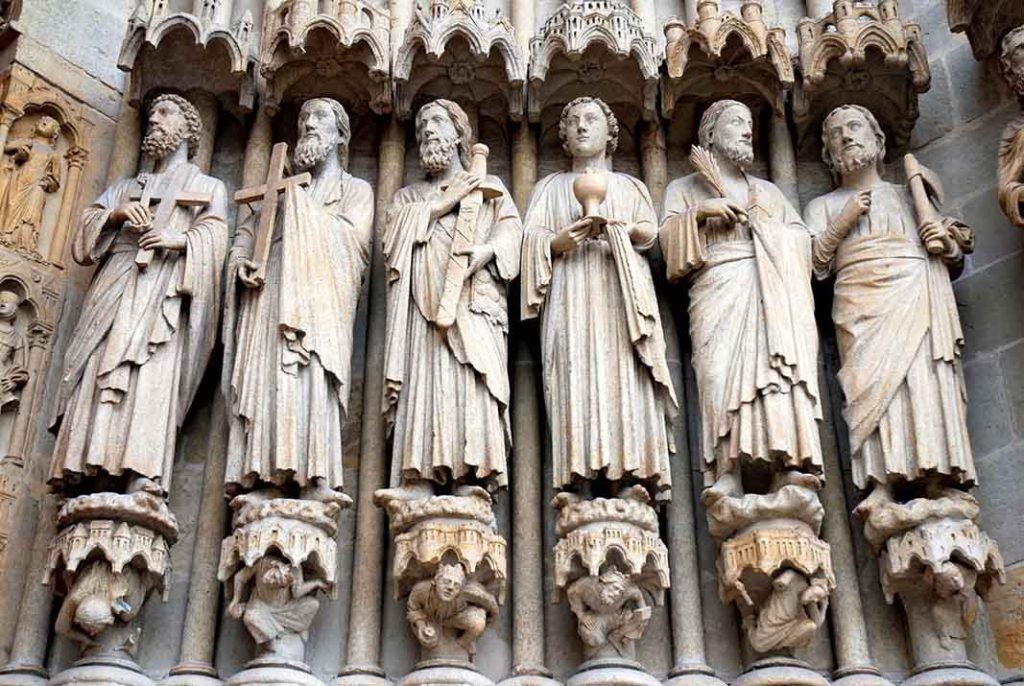
Getting There and Around
I reached Amiens from Paris by train in about 1 hour and 10 minutes. I booked my tickets on Trainline, which I always recommend for France—it’s user-friendly, available in English, and often cheaper than buying at the station.
For flights into France, I usually rely on Skyscanner or Omio to compare options. They’ve saved me time and money countless times.
What I Carried With Me
Visiting Amiens Cathedral and its surroundings requires very little gear, but I recommend:
- A water bottle in summer (it gets hot during climbs).
- A light scarf (for modesty and warmth inside).
- Comfortable shoes (the streets around Saint-Leu are cobbled).
- A notebook (I couldn’t resist jotting down impressions).
Living Memory in Stone
On my last evening, I stood again in Place Notre-Dame. The crowd was gathering for the light show, children chasing each other, couples holding hands. As the colors burst onto the façade, I felt an odd mixture of awe and intimacy. This cathedral wasn’t just a tourist attraction—it was the heart of the city, beating across centuries.
Travel isn’t only about ticking boxes or snapping photos. For me, Amiens Cathedral was a reminder of what endurance means—of what beauty, created centuries ago, can still give us today. Walking back through the quiet streets after midnight, the spire lit faintly against the sky, I knew I had experienced something far more profound than sightseeing. I had touched history, and in some small way, history had touched me back.
